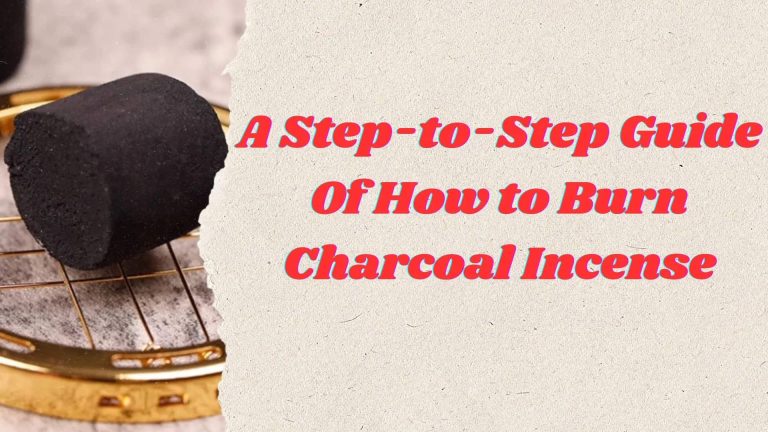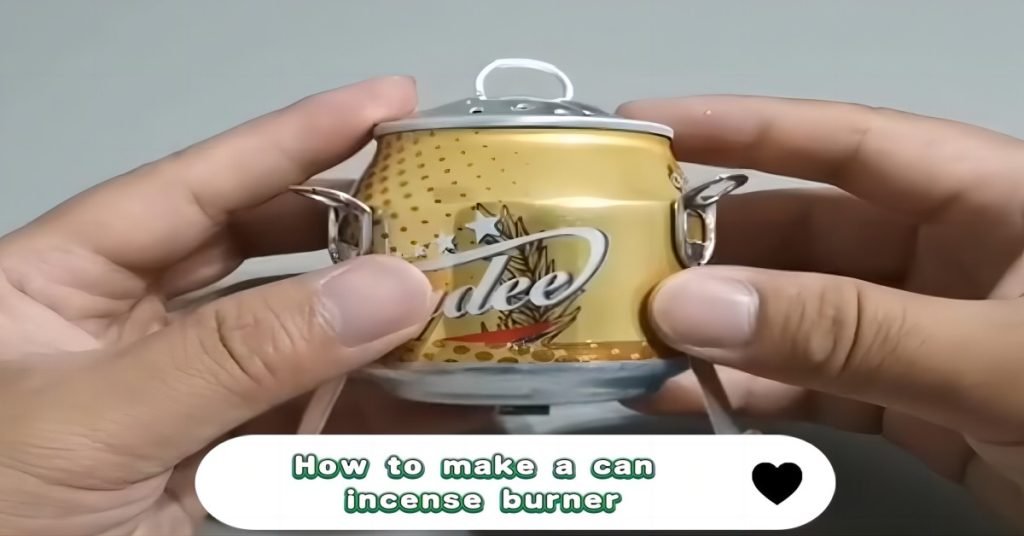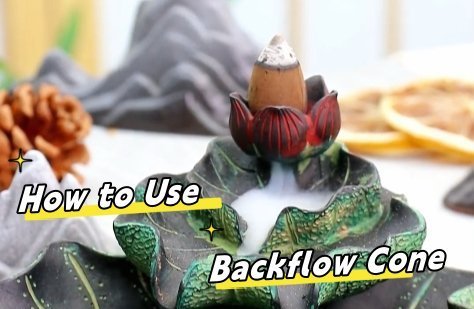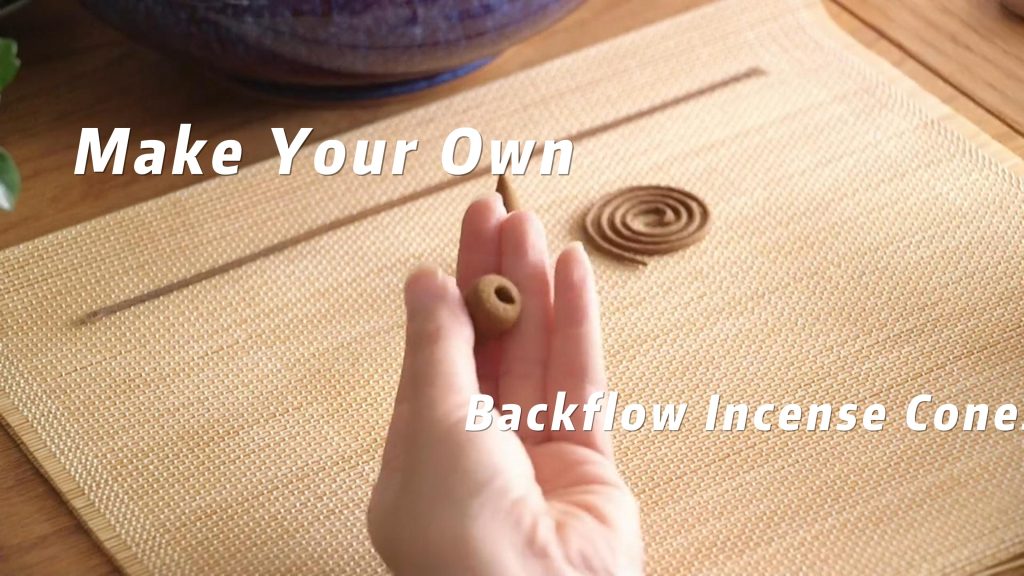Introduction
Burning incense with charcoal is a centuries-old practice that allows for the release of deep, rich fragrances from natural materials like resins, herbs, and powders. When done correctly, it creates a calming atmosphere while respecting the traditional methods of incense burning. Whether you’re using powder incense for a soft, subtle scent or loose incense for a more complex and earthy aroma, mastering the process of lighting and controlling charcoal is key to a successful burn. This article walk you through how to burn and light charcoal incense and how to use, light, and burn charcoal for powder and loose incense.
What Is Charcoal Incense?
Charcoal incense refers to a type of incense that contains charcoal as one of its main ingredients. It typically comes in various forms, such as sticks, cones, or loose powders. In these types of incense, the charcoal is blended with other aromatic ingredients like herbs, resins, or essential oils. The charcoal component helps the incense burn evenly and steadily, making incense charcoal a popular choice for its consistent fragrance release.
Characteristics of Charcoal Incense:
- Pre-mixed:The charcoal is already integrated with the incense materials (e.g., resin, powder, or essential oils) into a stick, cone, or powder form.
- Self-lighting:The charcoal in the incense allows it to be easily lit and burned without needing additional materials like a separate charcoal disc.
- Even burn:The charcoal base helps the incense burn smoothly and consistently, emitting a steady stream of smoke and fragrance.
Two Types of Charcoals Burned For Incense
Charcoal Discs
Charcoal discs are widely used as a heat source for burning loose incense, resin, herbs, and powders. These round, flat discs, usually about 1 to 1.5 inches in diameter, are self-lighting and easy to ignite with a lighter or match. Once lit, they provide an even, long-lasting burn, typically lasting between 30 to 60 minutes, making them ideal for extended sessions of incense burning. Commonly used in religious ceremonies, meditation, and aromatherapy, charcoal discs can support larger amounts of incense, ensuring a steady release of fragrance. Their size and burn time make them a popular choice for larger incense burners.
Charcoal Tablets
Charcoal tablets are those incense charcoal smaller and thicker than discs, typically measuring around 0.75 to 1 inch in diameter. Like discs, they are self-igniting and easy to light, but their more compact size makes them suitable for shorter burning sessions, lasting between 20 to 40 minutes. Charcoal tablets are often used in smaller incense burners for personal use or more controlled incense burning. Due to their shorter burn time, they are perfect for those who need a quick, aromatic experience without committing to a longer session. These tablets are favored for burning small amounts of resin or powdered incense
How to Burn and Light Charcoal Incense
When it comes to how to burn and light incense charcoal, this process is a delicate process that enhances the fragrance and atmosphere of any space. While it may seem straightforward, achieving an even, controlled burn requires attention to detail and a proper technique.
Step 1: Set Up the Incense Burner
To begin to light charcoal incense, place your charcoal incense in a heatproof incense burner made from materials like ceramic, stone, or metal, which can withstand the high temperatures produced during burning. Luckily, Lulu Incense offers best charcoal incense burner for you. You can also choose a brass incense burner ideally. Ensure the burner is positioned on a heat-resistant surface, such as a stone or ceramic mat, to prevent any heat damage to the underlying area. Make sure the burner is stable and located away from any flammable materials like paper, fabric, or curtains to avoid fire hazards. If desired, add a layer of sand or ash at the base of the burner to help distribute heat evenly and protect the burner from excessive direct heat.
Step 2: Light the Charcoal Incense
For the next step of igniting charcoal incense, using a pair of tongs, carefully hold the charcoal incense to avoid burning your hands. Ignite it by applying a steady flame from a lighter or match to the edge of the incense. Hold the flame for 20-30 seconds until the charcoal starts to crackle and spark, indicating it is igniting. As the sparks spread across the surface, rotate the incense slightly if needed to ensure the entire piece is evenly lit. Once the sparks have spread and the charcoal is glowing, place it back into the burner, ensuring you handle it with tongs for safety.
Step 3: Let the Charcoal Incense Heat Up
Allow the charcoal incense to burn for 2 to 5 minutes. During this time, the surface will turn from black to gray as a thin layer of ash forms, signaling that the incense is fully heated and ready to be used. At this point, the incense will be hot enough to begin burning your chosen resin, powder, or loose incense, providing a steady and even source of heat for releasing fragrant smoke
Cautions for Successfully Burning and Lighting Charcoal Incense
The following are four cautions you should pay attention to so as to successfully light and burn your charcoal incense:
Proper Ignition Time: Ensure the charcoal disc is fully lit before adding any incense. You’ll know it’s ready when it develops an even layer of gray ash. Trying to burn incense on a partially lit disc will result in uneven burning and poor fragrance release.
Steady Flame Application: Hold the flame to the charcoal long enough (usually 20-30 seconds) for it to spark and crackle. If the disc isn’t fully ignited, it may go out before heating up properly. Patience is key during the lighting process.
Avoid Overloading Incense: When placing incense on the charcoal disc, avoid using too much at once. Overloading the disc with resin or powder can smother the heat, reducing the effectiveness of the burn. Start with a small amount and add more as needed.
Check for Even Heating: Make sure the entire charcoal disc is evenly heated. If only one part is lit, the incense will not burn properly. Rotate the burner or gently blow on the charcoal to help distribute heat across the disc.
The above video gives a detailed introduction of how to light charcoal incense.
How to Burn and Light Powder Incense and Loose Incense with Charcoal
After learning how to successfully light incense charcoal, then we can proceed to discuss how to burn and light incense with charcoal. The types of incense we discuss here are mainly powder incense and loose incense. For resin incense, the process is similar:
Step 1: Level the Ash
Start your process of using charcoal for incense by preparing the base for your charcoal by leveling the ash in your incense burner. It’s important to ensure that the ash is loose and evenly spread across the entire surface of the burner. This creates a stable and insulated layer that helps regulate the heat from both the charcoal discs and charcoal tablets. A flat, even surface also makes it easier to position and bury the charcoal later on. If the ash is compact or uneven, it could cause uneven burning, which affects the overall experience of the incense. Make sure the ash is about 1-2 centimeters deep to provide good insulation.
Step 2: Dig a Hole for the Charcoal Disc or Tablet
After leveling the ash, the next step of buring charcoal for incense is to use a small incense shovel or spoon to dig a hole in the center. The hole should be about 1 centimeter deep and wide enough to fit the charcoal comfortably. This step is crucial because it provides a space where your charcoal disc and charcoal tablet can be securely placed and slightly buried. Burying the charcoal in the ash regulates the burn by moderating the heat, allowing for a steady release of fragrance while preventing excess smoke. Ensure the hole is not too deep, as this could limit the charcoal’s ability to emit heat effectively.
Step 3: Place and Cover the Charcoal
Once your charcoal is fully ignited and glowing, carefully use tongs to place it in the hole you dug earlier. Be cautious as the charcoal will be very hot. Once placed, gently cover the top of the charcoal with a thin layer of incense ash. This layer should be enough to bury the charcoal without completely smothering it. Covering the charcoal helps to regulate its heat, ensuring a slow and even burn. This technique also minimizes excessive smoke, providing a more refined and controlled incense-burning experience. Make sure the charcoal is still able to breathe under the ash.
Step 4: Prepare for Powder and Loose Incense
Once the charcoal is securely in place and covered with ash, it’s time to prepare for adding the incense. Start by using a slightly heated incense spoon to create a small indentation at the top of the ash layer. This step is essential for both powder and loose incense because it gives the incense a dedicated space to smolder evenly. Heating the spoon before creating the indentation helps to prevent ash from sticking to the spoon, ensuring a clean, smooth surface to work with.
For powder incense, the indentation provides the perfect area to sprinkle small, controlled amounts. Powder incense burns quickly, so it’s best to start with a thin layer, adding more as needed to avoid overwhelming the charcoal. The ash covering the charcoal will moderate the heat, helping the powder burn slowly and release a steady, pleasant fragrance without producing too much smoke.
For loose incense, such as herbs, resins, or bark, the indentation serves a similar function but with a few extra considerations. Loose incense requires more space than powder, so you may want to make the indentation slightly larger and deeper. When using resin or herbs, be mindful that they can produce more smoke than powder incense. The ash layer still helps to regulate the heat, ensuring the loose incense burns evenly and doesn’t burn too quickly. For both types of incense, a brass leaf or mesh can be placed over the indentation to evenly distribute the heat and prevent the incense from directly contacting the hot charcoal, ensuring a smoother, slower burn.
Step 5: Enjoy the Fragrance
Now that your charcoal is fully set up and covered with ash, and the incense has been placed on top, you’re ready to enjoy the fragrance. The ash will help regulate the burn, keeping it slow and steady while releasing the aroma of the incense. This method is ideal for creating a subtle, long-lasting fragrance that doesn’t produce too much smoke. As the incense burns down, you can add more powder or resin as needed to extend the experience. Be sure to monitor the burner occasionally and clear away any excess ash to maintain a clean and tidy setup.
Cautions for Successfully Burning Powder and Loose Incense with Charcoal
Proper Heating of Charcoal: Ensure the charcoal is fully ignited before adding any powder or loose incense. You’ll know it’s ready when a thin layer of gray ash forms on the surface. If the charcoal is not fully heated, the incense may not burn evenly, leading to poor fragrance release.
Use Small Amounts of Incense: When adding powder or loose incense, start with a small amount. Both types of incense burn quickly, and too much at once can overwhelm the charcoal and smother the heat, preventing a proper burn.
Control the Heat with Ash: When burning powder or loose incense, the ash layer on top of the charcoal helps regulate the heat. Make sure the charcoal is covered with a thin, even layer of ash to control the burn rate and ensure the incense smolders slowly without producing too much smoke.
Spacing of Loose Incense: When using loose incense like resins or herbs, ensure that the pieces are spaced out slightly on the charcoal to allow air circulation. Overloading one spot with too much incense can cause it to burn unevenly or create excessive smoke.
Replenishing Incense Gradually: Instead of adding large amounts of powder or loose incense at once, replenish it gradually as it burns away. This helps maintain a steady fragrance and prevents the charcoal from getting overloaded, ensuring a smooth, even burn
This video gives a full detailed guide of how to light charcoal for incense.
How to Put Out Charcoal Incense?
To safely put out your incense charcoal, there are three methods you can use:
Method 1: Filling in the Hole of the Ash
This is the easyest method. Since a hole was previously dug to burn the charcoal, you can simply fill that same hole with the surrounding ash. Cover the charcoal completely, ensuring there’s a thick layer of ash over it. This cuts off the oxygen supply, which will gradually extinguish the charcoal.
Method 1: Submerging in Water
However, the most effective and quickest way to extinguish and put out burning charcoal is by submerging it in water. Using tongs, remove the hot charcoal from the burner and carefully drop it into a bowl of water. This will instantly cool the charcoal and extinguish any remaining embers. Ensure it is completely soaked before discarding.
Method 2: Snuffing Out the Charcoal
Using a metal snuffer, you can press down on the burning charcoal to suffocate the flames. This method removes oxygen, which the charcoal needs to continue burning. However, make sure the snuffer is designed for high heat and handle the charcoal carefully afterward, as it may still be hot
Alternative: How to Burn Incense without Charcoal
If you don’t have charcoal or do not light using charcoal, you can still enjoy burning resin, powder, or loose incense using alternative heat sources such as an electric incense burner or a candle warmer. These methods allow you to release the fragrance without the smoke and mess of charcoal burning. Below is a step-by-step guide for using these alternatives:
1. Choose Your Burner:
- Select an electric incense burner or candle warmer as your heat source. Electric burners provide a controlled heat setting, while candle warmers use a candle to gently heat the incense.
- Make sure your burner has a heatproof dish or plate to hold the incense
2. Prepare the Burner
- For an electric burner, plug it in and set it to a low or medium heat setting. It is important not to use too much heat, as it may burn the incense too quickly.
- If using a candle warmer, place a lit tealight candle underneath the plate to gently heat the surface.
3.Place the Incense:
- For Resin Incense: Add a small amount of resin to the plate or dish. Resin melts and releases its aroma when gently heated, so a little goes a long way.
- For Powder Incense: Sprinkle a thin layer of powder incense on the dish. Powder burns quickly, so use small amounts and adjust as needed.
- For Loose Incense: If you’re using loose incense (herbs, dried flowers, etc.), place a small handful on the heated surface. Loose incense releases fragrance slowly as it heats.
4. Adjust the Heat (If Using an Electric Burner):
- Monitor the heat setting on your electric burner. Adjust as necessary to ensure the incense doesn’t burn too fast. For resins and powders, a lower heat setting is ideal for a more prolonged, steady fragrance release
5. Enjoy the Fragrance:
- Allow the heat to gently warm the incense. The gradual warming will release the scent into the room without producing smoke.
- You can add more incense as needed, but be careful not to overload the dish.
Small Tips For Burning Incense without Charcoal
- Heat Settings: For electric burners, start with the lowest setting to avoid burning the incense too quickly.
- Resin Melting: Resin incense melts into a sticky substance when heated. Make sure your dish is heatproof and easy to clean after use.
- Low Smoke: This method results in little to no smoke, making it ideal for those who are sensitive to smoke or prefer a cleaner fragrance experience.
Using an electric burner or candle warmer offers a simple, smokeless, and controlled way to enjoy resin, powder, or loose incense, making it a great alternative to traditional charcoal burning methods.
Conclusion
By following the steps in the above content, you can ensure a smooth, even, and enjoyable incense-burning experience with charcoal. Preparing the burner, properly igniting and placing the charcoal, and carefully adding powder or loose incense allows for controlled heat and a steady release of fragrance. The ash layer plays a crucial role in regulating the burn, ensuring your incense emits a subtle, long-lasting scent without excess smoke. Whether you prefer powder or loose incense, this method enhances the quality of your burn and allows you to fully appreciate the aroma. With a tidy setup and proper care, you’re ready to enjoy the calming atmosphere your incense creates
FAQ About How to Use Charcoal Incense
As mentioned above, the process of burning resin incense with charcoal is quite similar with the process of how to burn powder incense with charcoal. Here is how to use charcoal to burn your resin incense: start by lighting a charcoal disc in a heatproof burner. Once the charcoal is fully heated and covered in a thin layer of ash, place a small amount of resin incense on top of the charcoal. The heat will cause the resin to smolder and release its rich, natural fragrance. Be careful not to overload the charcoal with too much resin at once, as it may produce excessive smoke. Add small amounts gradually as needed to maintain a steady burn and aromatic release
No, charcoal discs typically cannot be reused once they have been fully lit and burned. Charcoal discs are designed to be single-use because they lose their ability to ignite and burn effectively after their first use. When a charcoal disc is fully burned, it turns into ash and crumbles, making it unsuitable for reuse.
However, if the charcoal disc hasn’t completely burned out and still retains some unburned material, you might be able to relight it. In this case:
- Check for Remaining Charcoal: If a significant portion of the disc is still intact, you can attempt to relight it. Hold a lighter to the remaining part and see if it reignites.
- Avoid Partial Burning: If only a small section is unburned, it may not relight effectively, and it’s better to use a fresh disc for a consistent burn.
For the best results and to ensure even burning of your incense, it’s recommended to use a new charcoal disc each time
Charcoal incense, when used correctly, is a safe and effective way to enhance the atmosphere with natural aromas. The concerns often associated with charcoal incense, such as excessive smoke or respiratory irritation, usually stem from poor-quality products or improper use. High-quality charcoal incense, made from natural materials, burns cleanly and evenly, releasing minimal smoke while providing a long-lasting, pleasant fragrance. When using charcoal incense in a well-ventilated space, the risks are significantly reduced, and you can enjoy the full benefits of the incense without any negative effects.
Additionally, many lower-quality charcoal discs contain additives or chemicals that help them ignite quickly but can produce unpleasant fumes. By opting for natural, chemical-free charcoal, you eliminate these potential issues and ensure a smoother, safer burn. It’s important to note that charcoal incense is designed to smolder and release a gentle aroma, not to fill a space with dense smoke. Following proper ventilation practices and choosing high-quality charcoal incense ensures that you experience the full aromatic potential without the downsides of inferior products.
At Lulu Incense, we offer high-quality charcoal incense that is crafted to burn smoothly and cleanly, using natural materials that reduce smoke and provide a pleasant experience. When used in a well-ventilated area, Lulu Incense’s charcoal discs ensure a steady burn that releases the full fragrance of your favorite resins, powders, or loose incense. Shop best incense charcoal now!
Yes, you can of course cover a charcoal incense disc. Here is why:
- Covering your charcoal with a thin layer of incense ash, sand, or even a mesh screen can help moderate the heat. This helps the incense burn more slowly and evenly, releasing a steady fragrance without burning too quickly.
- For too much smoke, covering the charcoal with a fine layer of ash can help reduce the intensity of the burn, thereby minimizing smoke production.
- Covering the charcoal in ash or using a lid designed for incense burners can help contain any sparks or ash from flying, which makes the process safer, especially in enclosed spaces.
However, you need to pay attention to ventilation and smothering issues. Please ensure there is adequate airflow to keep the charcoal burning properly






